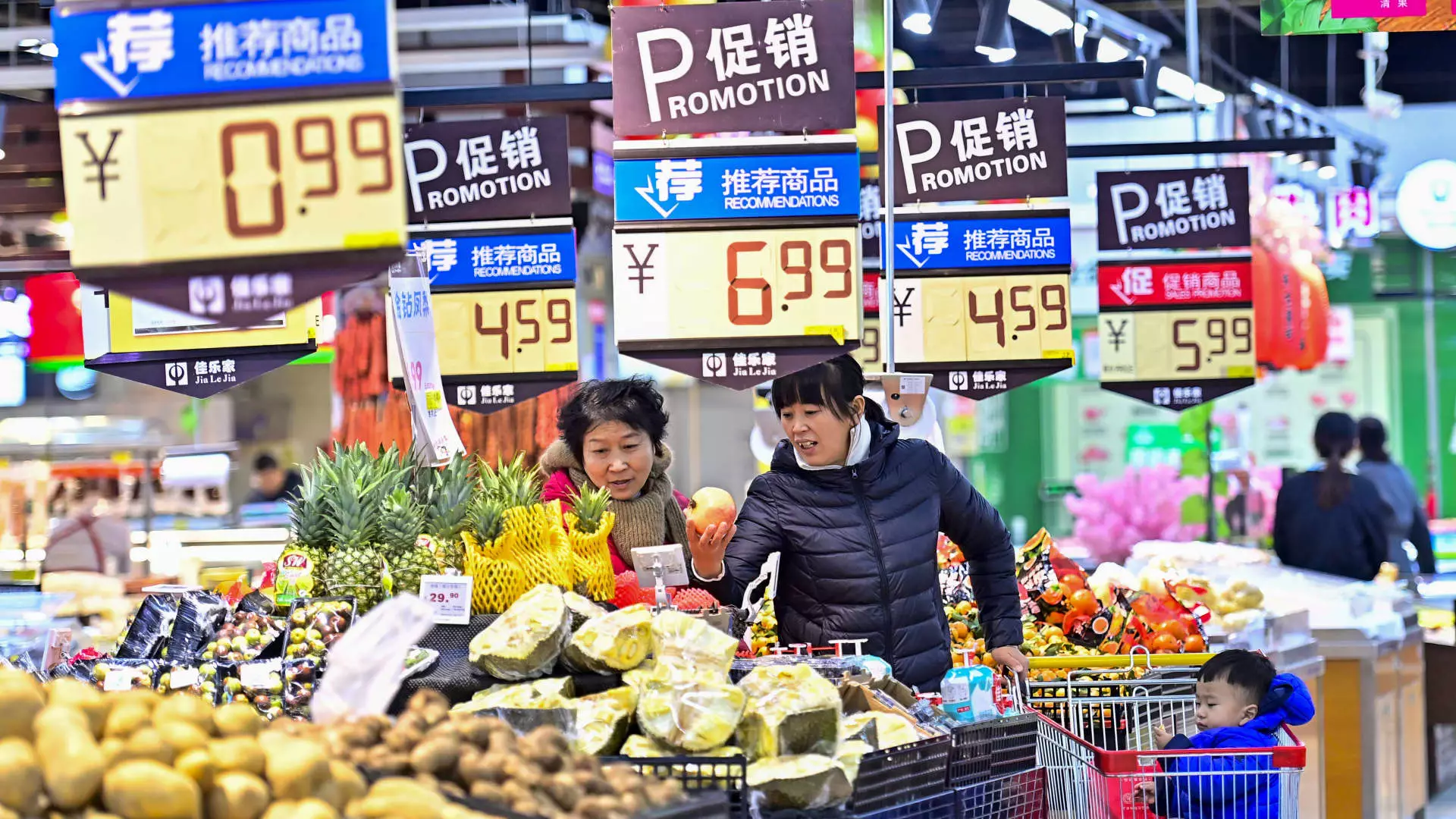Recent data from the National Bureau of Statistics has highlighted a worrying trend in China’s economic landscape, with consumer price inflation for December barely registering at a mere 0.1% year-on-year. This minor increase raises significant concerns about the potential for deflation in China, as it is below the 0.2% recorded in November. Although this outcome aligns with Reuters forecasts, it reiterates a broader narrative of sluggish demand and tepid consumption patterns.
Delving deeper into the inflation numbers, the core Consumer Price Index (CPI)—which excludes volatile sectors like food and energy—showed a modest rise of 0.4% year-on-year. This increment, albeit slight compared to November’s 0.3%, hints at some resilience in consumer behavior, yet it remains lackluster in the face of broader economic challenges. On a month-over-month basis, the CPI has shown no movement, indicating stagnation in consumer prices, which could signal deeper underlying issues.
Food prices particularly tell a captivating story. With a decrease of 0.6% month-on-month, agricultural pricing dynamics were impacted positively by favorable weather conditions. However, the decline in prices of staples such as pork—down 2.1%—not only affects consumer spending but signals a potential future issue as analysts at ANZ Bank warn that any further drops could exert pressure on the headline CPI. Contrastingly, the year-on-year prices for pork and fresh vegetables, increasing by 12.5%, demonstrate that while certain categories may benefit from seasonal fluctuations, overall consumer sentiment remains cautious.
Beyond the consumer sphere, industrial pressures are vividly illustrated through the Producer Price Index (PPI), which has plunged 2.3% year-on-year, marking its 27th consecutive month of decline. This downturn is slightly better than expected estimates, highlighting a complex picture for China’s manufacturing sector. Factors like stalled infrastructure projects during the off-season have hindered demand for essential materials such as steel, causing a persistent drop in wholesale pricing.
The overarching concern for policymakers is the persistent near-zero consumer inflation, underscoring weak domestic demand. Despite various stimulus measures rolled out by the Chinese government since last September—including interest rate cuts and efforts to stabilize the stock and property markets—consumption has yet to pick up velocity. Initiatives like the recent consumer trade-in scheme symbolize attempts to stimulate spending by providing subsidies for equipment upgrades, yet experts like Louise Loo from Oxford Economics argue these efforts provide only short-term relief.
The Consumer Sentiment Challenge
As the Chinese New Year approaches, consumer behavior is shifting towards a more defensive posture, with many individuals anticipating discounts before parting with their money. Shaun Rein of the China Market Research Group elucidates this sentiment, emphasizing that potential buyers are unlikely to engage with the retail sector unless they perceive significant value in their purchases. The concept that consumers will only buy when presented with “deals” further perpetuates a cycle of hesitancy.
Yet, not all data points are discouraging. China’s factory activity has noted an expansion over the past three months, even though December brought a slowdown in this growth. Carlos Casanova from Union Bancaire Privée highlights that while there are signs of recovery post-policy shifts, ongoing issues—like challenges in the property sector and trade tensions with the United States—cast a long shadow over the economic outlook.
Looking forward, analysts maintain a cautious outlook on China’s inflation trajectory. The interplay between governmental policy measures and consumer behavior remains critical; however, there are serious doubts that the path to economic reflation will meet market expectations. China’s onshore yuan recently reached a 16-month low against the dollar, reflecting broader concerns tied to inflation, domestic spending, and external economic pressures. As policymakers navigate this delicate landscape, the coming months will be pivotal for China’s economic revival narrative.



Leave a Reply